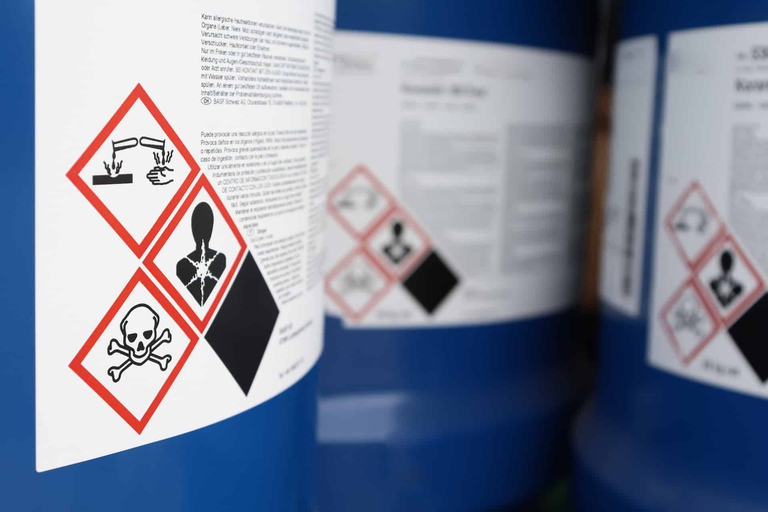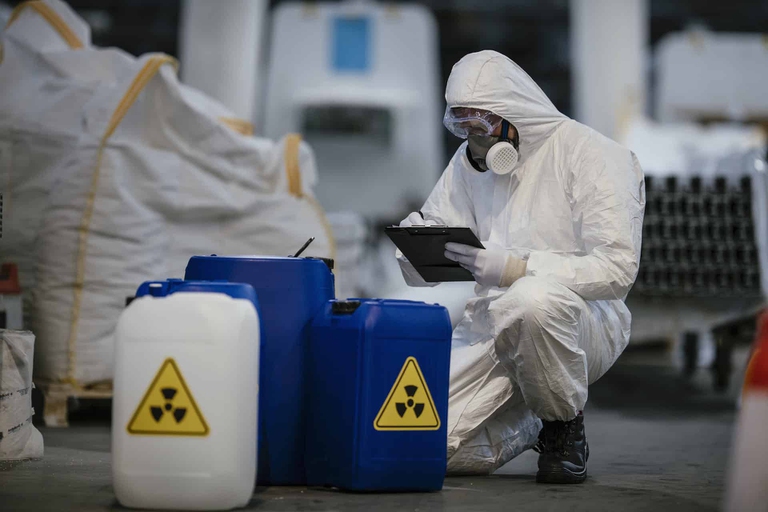https://www.lifegate.it/shein-oko-test-intervista
- |
From baby shoes to clothes for teenagers, up to faux leather jackets for adults:the German magazine Eco-test has published the results of some tests conducted by specialized laboratories which show a alarming reality regarding the composition and production of products from ultra fast fashion brands in question.The scholars conducted their research on a sample of 21 items of clothing and accessories and, in two thirds of them, residues of highly toxic chemicals dangerous to human health were found.No product tested was deemed to be of "sufficient quality to be placed on the market". Shein's response so far has been limited to withdrawing some products from the market for offending children, but declined to provide further explanation to researchers.Us we came into contact with the German company Öko-test, which commissioned the analyzes to several accredited laboratories in Germany (since they are laboratories widely used by the textile industry they prefer to remain anonymous):here is how the tests were carried out, the results in detail and, above all, the risks to the health of consumers, workers and the environment.

What analyzes has Öko-test conducted about Shein products
Let's start from the beginning:why did you conduct these tests?Have you received any reports?
There are various aspects that piqued our interest in Shein fashion from a consumer advocacy perspective.Retailers like Shein or Temu have gained enormous importance and size in recent years and an important target for these companies are teenagers, who are reached via social media and spend their pocket money on the app.Shein's sales and marketing practices are highly controversial, with German consumer groups accusing the company of violating the European Union's Digital Services Act (DAS).At the same time, various NGOs have provided evidence that Shein's fashion is produced under substandard manufacturing conditions and that the company's clothing and shoes are heavily contaminated with toxic chemicals.
Can you describe in detail how the research process took place, from sourcing the items to test to the tests involved?
First, we ordered 21 items of Shein clothing, obviously without using our Öko-test address, but via a private account.We selected garments for women, men, teenagers and newborns, and a pair of shoes for each of these targets and subsequently sent them to various specialized laboratories.In the first part of the test we had the garments analyzed for a variety of chemical residues depending on the material, including aromatic amines, azo dyes, formaldehyde, alkylphenol ethoxylates and heavy metals such as arsenic, cadmium, lead and antimony.Depending on the material used, further tests were performed:we analyzed the presence of phthalates, dimethylformamide and polycyclic aromatic hydrocarbons (PAHs), both in shoes and in synthetic leather parts.When it comes to baby clothing, we also wanted to know what happens when a newborn sucks on clothes:therefore we tested the saliva resistance of the garments in question.In the second part of the test we sent all the garments to a specialized laboratory, which washed and dried the fabrics three times, strictly following the instructions on the labels.The experts then assessed whether the fabrics had shrunk, deformed or suffered other visible changes, such as pilling or torn seams.We also performed a bending test on artificial leather jackets and shoes, clamping the shoes in a device that simulates 30,000 steps by bending the sole.In the third part of the test we wanted to find out under which social and ecological conditions the Shein articles in our test had been produced.To do this, we sent Shein a detailed questionnaire for each of the 21 products, but we never received a response.

In the report, refer to categories such as sufficient or poor:How does the measurement of a toxicity scale applied to clothing work?
Below our test table is a detailed legend:We rate each product on a rating scale from 1 "very good", 2 "good", 3 "satisfactory", 4 "sufficient", 5 "poor" to 6 "unsatisfactory".This rating scale is based 50 percent on harmful substances and material tests and 50 percent on the manufacturing conditions of the items.Shein's products therefore scored so low also because the company did not respond to our questionnaire on production conditions, and we weighted this partial result as "unsatisfactory" at 50 percent.As regards the evaluation of harmful substances, we work according to a system of different point deductions, which are assigned based on the dangerousness of a compound (classification according to Reach, i.e. the regulation corresponding to the acronym registration, evaluation, authorization and restriction of chemicals which concerning the registration, evaluation, authorization and restriction of chemical substances).
What specific toxic chemicals have you detected, in what quantities and what risks do they pose to health?
We found toxic chemicals in about a third of the items we examined.Particularly worrying is that among the contaminated items there is also clothing for babies and children:For example, toxic antimony leaked from a baby's clothing into a solution that simulated sweat.Antimony residues can be absorbed through the skin with sweat and are highly toxic if they enter the bloodstream:they can cause atrocious headaches and very violent vomiting attacks which in some people can even lead to death.The laboratory also detected dimethylformamide, a chemical classified in the EU as "probably harmful to fertility", in a teenage outfit.The most contaminated, however, were two pairs of sandals that contained a whole cocktail of harmful substances, exceeding several EU limits for lead, which is neurotoxic and toxic for reproduction, and for cadmium, which can cause damage to the kidneys and bones if ingested over a long period, and for banned phthalates, suspected of harming reproductive organs and acting as a hormone:this limit was exceeded 15 times.The women's sandals were also contaminated with anthracene, naphthalene, dimethylformamide, organotin compounds and PVDC/chlorinated compounds.A pair of synthetic leather men's sandals fared no better:the laboratory detected a content of polycyclic aromatic hydrocarbons (PAHs) in shoes, which can cause cancer, 22 times higher than the limit established by the REACH regulation.The sandals also exceeded the limit value for phthalates, due to the presence of lead, anthracene, indeno, pyrene, naphthalene, dimethylformamide and PVD/PVDC/chlorinated compounds.

In your opinion, what is the motivation for using banned substances such as neurotoxic lead, polycyclic aromatic hydrocarbons and phthalates in the production of clothes and accessories?
Shein did not provide us with any information about where the company sources its fabrics and under what environmental conditions these fabrics were produced.Therefore, we do not know whether Shein has an overview of the chemical management of its suppliers and whether the company limits the chemicals its suppliers can use via a list of prohibited substances in production.Our findings suggest that this is not the case, or that Shein does not monitor compliance with these requirements.
When were these chemical components banned and why?
Many of the chemicals we criticize are regulated by the European Reach chemicals legislation:This regulation has been in place since 2007, but the classification of different chemicals according to their risk potential is an ongoing process that has been ongoing since then and has not yet been completed.
Your report also mentions a lack of transparency on Shein's part:What did you ask the company and why?
We also wanted to know the social and ecological conditions under which Shein fashion is produced.We then sent the company a detailed questionnaire for each product whose highlights included information on its supply chain, from raw material production and wet processing stages to the final product.The cotton used by Shein, for example, comes from Xianjiang, where the United Nations denounces the fact that Muslim minorities such as the Uighurs are forced to carry out forced labor.Under what working conditions is Shein fashion produced?Does the brand ensure compliance with core labor standards and fair payment throughout the supply chain?Does Shein ensure that the environment is kept clean, especially in wet processing processes such as dyeing and finishing?Are potential risks of human rights violations analyzed and minimised?Are there chemical bans along the entire supply chain via a so-called Production Banned Substances List?Do suppliers conduct regular wastewater testing at synthetic fiber suppliers and wet processing plants?We sent the questionnaire to two different email addresses and checked the read receipt.However, we have not received any response to our queries from Shein.Only after the test was published in Shein magazine did she contact us and announce that the two adult sandals would be withdrawn from sale.The company also provided us with some information on manufacturing conditions.However, Shein did not complete our questionnaire or provide us with evidence of its efforts in the area of manufacturing conditions.As a result, our negative rating in the Corporate Social Responsibility (CSR) sub-result has not changed.
Could the substances you detected in Shein clothing and accessories also pose environmental risks?Maybe with their diffusion through washing or if piled up in landfill or burned?
We cannot completely rule it out, but the much more serious problem is the use of these chemicals in the producing countries themselves.This is because workers in textile factories are exposed to dangerous contaminants to a much greater extent than European customers.Furthermore, we know nothing about the technical standards according to which Shein fabric production plants operate and whether, for example, wastewater is discharged untreated into rivers, as has long been the case in the Chinese textile industry.
